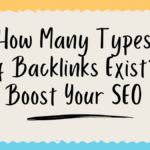Hey there, future website rockstar! 🚀 Ever wondered how some websites magically appear at the top of Google searches? It’s not magic, it’s SEO marketing. If you’re like, “Uh, SEO… what now?”, don’t worry! I’m here to break it down in simple terms and show you how to use it to boost your own website’s visibility, even if it’s brand spankin’ new.
What’s the Big Deal About SEO Marketing, Anyway?
Imagine you’ve got a super cool online store selling handmade jewelry. You’ve poured your heart into it, but nobody’s finding it! That’s where SEO marketing swoops in like a superhero. SEO stands for “Search Engine Optimization,” and it’s basically a set of strategies to help your website get noticed by search engines like Google.
Think of it like a popularity contest, but instead of winning votes, you’re winning clicks. The higher you rank in search results, the more people will see your website, and that means more potential customers!

SEO Marketing Demystified: The Basics
Let’s break down the key elements of SEO marketing that even a newbie can grasp:
- Keywords: Your Website’s Secret Code
When someone searches for something, they enter words and phrases into search engines, which are known as keywords. If you want your handmade jewelry store to show up when someone searches for “unique silver earrings,” then “unique silver earrings” is your keyword.
- Tip: Use tools like Google Keyword Planner (it’s free!) to find keywords that are relevant to your website, but not too competitive. Remember, it’s easier to rank for a less popular keyword when you’re just starting out.
- On-Page SEO: Making Your Website Shine
Optimizing your website’s content is the main goal of on-page SEO. It’s like giving your website a makeover so search engines fall head over heels for it.
- Tip: Use your keywords naturally in your website’s titles, headings, and throughout your content. But don’t overdo it! Keyword stuffing (cramming in keywords unnaturally) is a big no-no.
- Off-Page SEO: Building Your Website’s Reputation
Off-page SEO is like spreading the word about your awesome website and getting other websites to vouch for it. When a trustworthy website links to yours, it’s like a vote of confidence in Google’s eyes.
- Tip: Start by reaching out to other websites or blogs in your niche and ask if they’d be interested in linking to your content. You can also try guest blogging (writing a post for another website) and including a link back to your own site.
- Technical SEO: The Behind-the-Scenes Magic
Technical SEO is a bit more complex, but it’s like making sure your website’s engine is running smoothly so search engines can easily crawl and index your pages.
- Tip: Make sure your website loads quickly, is mobile-friendly (looks good on phones and tablets), and has a clear sitemap (a roadmap of all the pages on your website).
- Content is King (or Queen!)
High-quality, engaging content is the heart and soul of SEO marketing. It’s what keeps visitors on your website and coming back for more.
- Tip: Create content that’s valuable and interesting to your target audience. Use different formats like blog posts, videos, infographics, and even podcasts to keep things fresh.
- Local SEO: Dominating Your Neighborhood
If you have a local business (like a brick-and-mortar jewelry store), local SEO is your best friend. It helps you show up in local search results (like Google Maps) when people are looking for businesses in your area.
- Tip: Reclaim and enhance your Google My Business listing, if you have one. This is a free tool that lets you manage how your business appears in Google search and Maps.
- Measure, Analyze, Repeat
SEO marketing isn’t a one-and-done deal. It’s an ongoing process. You need to keep track of how your website is performing, analyze the data, and make adjustments as needed.
- Tip: Use tools like Google Analytics and Google Search Console to track your website’s traffic, see which keywords are driving traffic, and identify areas where you can improve.
Real-World Examples: SEO in Action
- A local bakery uses local SEO to rank at the top of Google Maps for “best cupcakes near me,” attracting a flood of hungry customers.
- A travel blogger uses on-page SEO to optimize their blog posts for keywords like “budget travel tips” and “solo female travel,” driving thousands of visitors to their website each month.
- An e-commerce store uses off-page SEO to build backlinks from reputable websites, increasing their website’s authority and improving their search rankings.
SEO Marketing Success Awaits
Remember, SEO marketing is a marathon, not a sprint. The benefits outweigh the time and effort required. By following these tips and staying consistent, you can skyrocket your website to the top of search results and achieve your online goals.
Proceed and rule the realm of search engine optimization! 💪
FAQs:
- What is the duration required to observe outcomes from SEO marketing? It depends on various factors like your website’s age, competition, and the quality of your SEO efforts. It can take anywhere from a few weeks to several months to see significant results.
- Do I need to hire an SEO expert? Not necessarily. There are plenty of resources available online (including this blog post!) to help you learn SEO basics and implement them yourself. However, if you have a complex website or need more advanced strategies, an SEO expert can be a valuable investment.
- Is SEO marketing expensive? Not really. Many basic SEO tactics (like keyword research and on-page optimization) are free. However, there are paid tools and services available if you need more advanced features or want to save time.
- What’s the difference between SEO and SEM? SEO stands for “Search Engine Optimization,” which focuses on organic (unpaid) search results. SEM stands for “Search Engine Marketing,” which includes both SEO and paid advertising (like Google Ads).
- Can I do SEO marketing on my own? Absolutely! With the right resources and a willingness to learn, you can definitely implement effective SEO strategies on your own.



